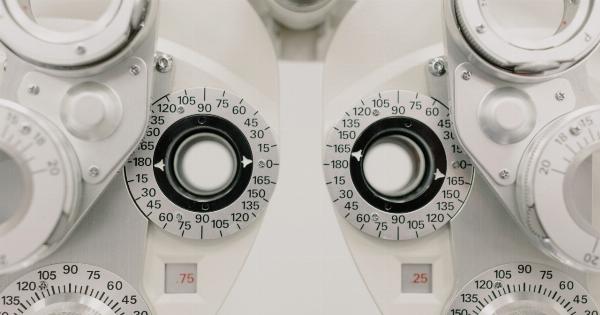There is no doubt that measuring blood pressure is an essential aspect of health assessments. This simple and non-invasive test helps screen for hypertension, a serious health condition that can lead to stroke, heart attack, or kidney problems.
But how accurate are blood pressure readings? This is a question that has been asked for years, and the answer is not always straightforward.
Factors That Affect Blood Pressure Readings
Before jumping into the accuracy of blood pressure measurements, it’s essential to understand the factors that can affect the readings. These include:.
- The patient’s posture – Blood pressure can differ depending on whether a patient is lying down, sitting, or standing.
- The patient’s arm position – If the patient’s arm is not at heart level, the reading may be higher or lower than expected.
- The size of the cuff – Using the wrong cuff size for a patient can lead to inaccurate measurements.
- The quality of the equipment – Older or poorly maintained equipment can produce incorrect readings.
- The experience of the health care provider – Inexperienced medical professionals may make mistakes during the measurement process.
How Blood Pressure is Measured
There are two components to a blood pressure measurement – systolic pressure and diastolic pressure. Systolic pressure is the top number in a blood pressure reading and represents the pressure in the arteries when the heart beats.
Diastolic pressure is the bottom number and represents the pressure in the arteries when the heart is at rest.
The most common method for measuring blood pressure is using a sphygmomanometer, a device that includes a cuff, a pump, and a dial. Here’s how it works:.
- The cuff is placed around the arm, just above the elbow.
- The pump is used to inflate the cuff, temporarily stopping blood flow to the arm.
- The healthcare provider listens for a pulse using a stethoscope and slowly releases the pressure in the cuff.
- The point when the healthcare provider hears the first pulse is recorded as the systolic pressure, while the point where the pulse disappears is recorded as the diastolic pressure.
The results are recorded as two numbers, the systolic pressure over the diastolic pressure, measured in millimeters of mercury (mmHg).
Accuracy of Blood Pressure Readings in the Doctor’s Office
Despite changes in blood pressure monitoring technology, the most common method for measuring blood pressure remains the manual method – like the one described above.
A manual measurement in the doctor’s office is considered ‘gold-standard’ for blood pressure measurement.
It’s the one that health care providers use as a reference point, and it’s typically based on three measurements taken over several visits.
The truth is that blood pressure readings in the doctor’s office may not always be accurate. There are several reasons for this:.
- White-coat hypertension – Some patients can become anxious in a medical environment, experiencing a temporary increase in blood pressure that might not reflect their usual levels.
- Masked hypertension – Conversely, some patients have a blood pressure that is normal in the office but elevated in their daily lives (eg, when at work, school, or home).
- Measurement errors – like the factors which affect blood pressure measurements discussed above. Errors can be caused by equipment or human error.
Ambulatory Blood Pressure Monitoring
To get a more reliable assessment of blood pressure, healthcare providers may offer ambulatory blood pressure monitoring (ABPM). Recent studies suggest that ABPM is better than office blood pressure measurement in assessing cardiovascular risk.
This is because it takes into account the inaccuracies that come with a single doctor’s office visit.
ABPM involves wearing a blood pressure monitor constantly for 24 hours. The monitor automatically measures blood pressure every 15 to 30 minutes. Patients can then go about their daily life without worrying about taking their blood pressure.
The results are downloaded into a computer and analyzed by a healthcare provider to assess the patient’s blood pressure patterns and risks.
Self-Monitoring Blood Pressure
An increasing number of medical devices now offer the ability to self-monitor your blood pressure at home. Studies have suggested that self-monitoring can provide more accurate readings compared to in-office measurements.
It can also provide more regular readings, which can be useful in tracking changes in blood pressure over time.
Self-monitoring blood pressure requires a home blood pressure monitor. Devices vary in terms of cost, features, and accuracy.
It’s crucial to choose one with appropriate cuff size and calibration and ensure you receive proper instruction on using the device.
Taking Measures to Ensure Accurate Blood Pressure Readings
Regardless of the method, it’s important to take steps to ensure accurate blood pressure measurements. Here are some suggestions:.
- #1 – Stay Calm During Measurement – Try to remain calm during blood pressure measurement to prevent white-coat hypertension. Take a few deep breaths and avoid talking during the process.
- #2 – Don’t Drink Alcohol or Caffeine before Measurements – Alcohol or caffeine can make your blood pressure rise temporarily.
- #3 – Use the Right Sized Blood Pressure Cuff – Ensure that the cuff fits securely around your upper arm. Measure your arm and compare it to the cuff’s dimensions before selecting a cuff.
- #4 – Be Consistent with Your Measurements – Take measurements at the same time each day or as recommended by your healthcare provider.
- #5 – Make Several Measurements at Each Visit – Health care providers should take measurements two or three times during each visit, allowing a few minutes between each reading. An average of readings should be used to make a diagnosis of hypertension.
Conclusion
In conclusion, blood pressure readings taken in a doctor’s office may not always be accurate. Factors like white-coat hypertension, measurement errors, and the method used can all impact accuracy.
However, methods like ABPM and self-monitoring can provide more accurate and regular measurements. Regardless of the method used, ensuring accurate blood pressure measurements requires using proper equipment, taking measurements consistently, and following recommended guidelines.






























